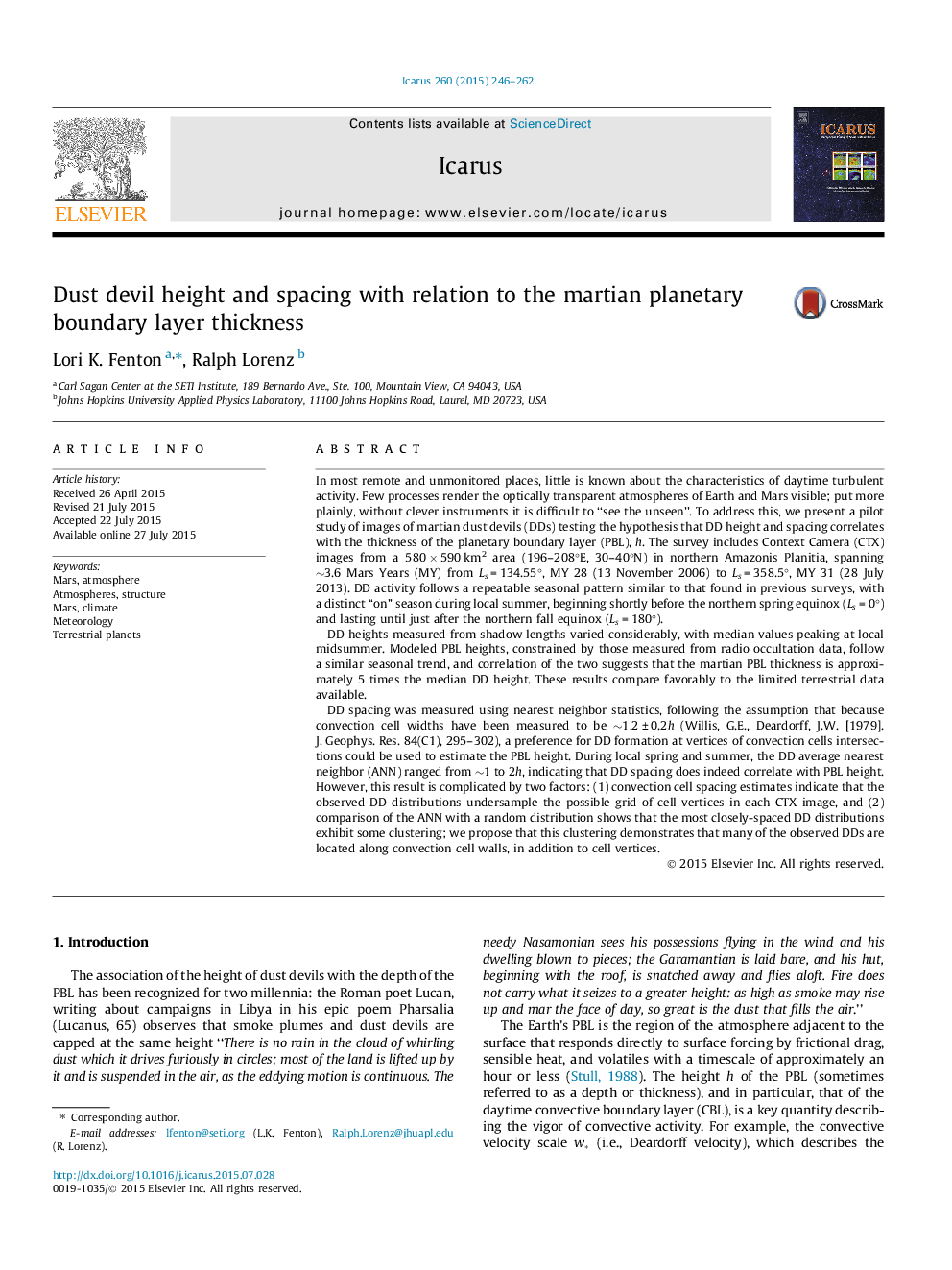| Article ID | Journal | Published Year | Pages | File Type |
|---|---|---|---|---|
| 8136061 | Icarus | 2015 | 17 Pages |
Abstract
DD spacing was measured using nearest neighbor statistics, following the assumption that because convection cell widths have been measured to be â¼1.2 ± 0.2h (Willis, G.E., Deardorff, J.W. [1979]. J. Geophys. Res. 84(C1), 295-302), a preference for DD formation at vertices of convection cells intersections could be used to estimate the PBL height. During local spring and summer, the DD average nearest neighbor (ANN) ranged from â¼1 to 2h, indicating that DD spacing does indeed correlate with PBL height. However, this result is complicated by two factors: (1) convection cell spacing estimates indicate that the observed DD distributions undersample the possible grid of cell vertices in each CTX image, and (2) comparison of the ANN with a random distribution shows that the most closely-spaced DD distributions exhibit some clustering; we propose that this clustering demonstrates that many of the observed DDs are located along convection cell walls, in addition to cell vertices.
Related Topics
Physical Sciences and Engineering
Earth and Planetary Sciences
Space and Planetary Science
Authors
Lori K. Fenton, Ralph Lorenz,
